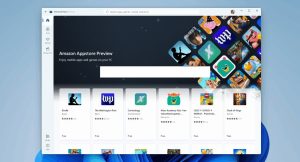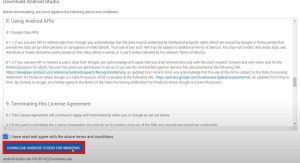When it comes to entertainment and information, the Google Play Store is a household name. It’s a major marketplace for Android apps, games, music, movies, and more. It is traditionally available on Android devices. However, this does not restrict its function on other types of devices such as Windows 10 computers.
With Play Store on the computer, you can access all your favourite apps on a larger screen. You also access apps that are not traditionally available on Windows 10. If you want to install the app on your Windows 10, you can follow a few steps.
System Requirements to Install Play Store on Windows 10
Before you start the process of installing the Play Store, ensure you understand what you need. First, your device should have at least 4GB of RAM and 64 GB of storage space. Once you check that, you should ensure you have a 64-bit processor and that your device can support virtualization technology. Once you have these requirements, proceed to the next step.
Step-by-Step Guide to Download and Install Google Play Store on Windows 10
Follow the steps below to install the Play Store on your Windows 10 device.

-
Choose an Android Emulator
You will need an Android emulator to install the Play Store app on your device. For this reason, you need to research the available options and choose one that suits your needs. The available emulators include BlueStacks, NoxPlayer and LDPlayer, each with its own features and performance benefits. Once you have chosen an emulator, visit its official website and download the installation file.
-
Install the Android Emulator
For this, locate the downloaded installer file and double-click to run it. Once you do so, follow the on-screen instructions to complete the installation process. This usually involves agreeing to the terms and conditions and selecting an installation location.

-
Set Up the Emulator
After installation, launch the emulator from your desktop or start menu. Follow the initial setup process, which may include logging in with your Google account, setting up preferences, and configuring basic settings.
-
Access Google Play Store
The next step is to open Google Play Store: The Google Play Store app should be pre-installed in the emulator. If not, you can download the Play Store APK file and install it manually within the emulator.
You can then open the Google Play Store and sign in with your Google account to start using it.
-
Download and Install Apps
Use the search bar within the Play Store to find apps and games you want to install. Click on the app you want to install and then click the “Install” button. The app will be downloaded and installed within the emulator.
Common Issues that Can Occur
- Emulator Performance: Ensure your PC meets the minimum system requirements for the emulator. Close other applications to free up system resources. Consider upgrading your hardware if performance is consistently poor.
- Play Store Not Working: Check your internet connection. Ensure the emulator is up-to-date. Try clearing the Play Store cache within the emulator’s settings. If problems persist, reinstall the emulator.
- App Compatibility: Some apps may not be compatible with emulators. Check the app’s requirements and see if there are any alternatives available.
Hello! I’m Frances Micky Johnson, a dedicated writer and SEO expert at openplaystore.com. I specialize in creating step-by-step guides that help users efficiently navigate the Play Store and download APK files.
Additionally, I explore new apps and write reviews, offering our readers valuable insights into the latest digital tools. My work is driven by a desire to make technology accessible and enjoyable.
You can contact me by here: [email protected]
